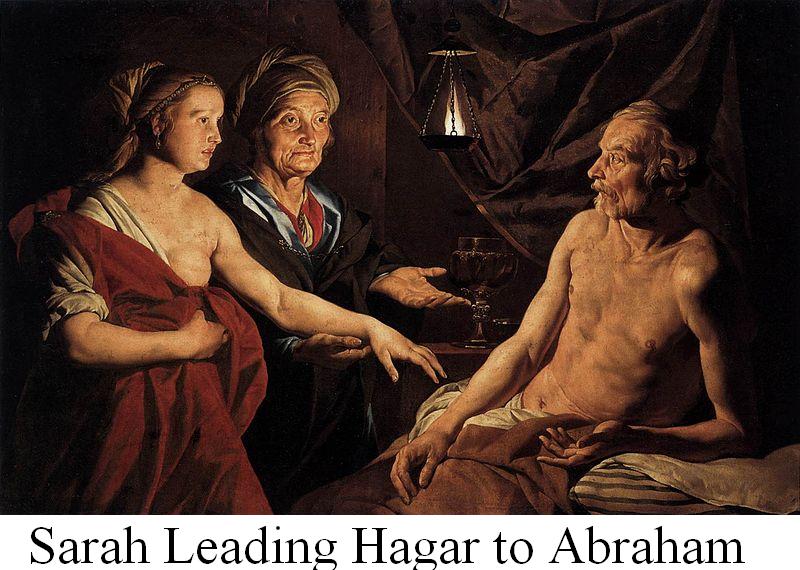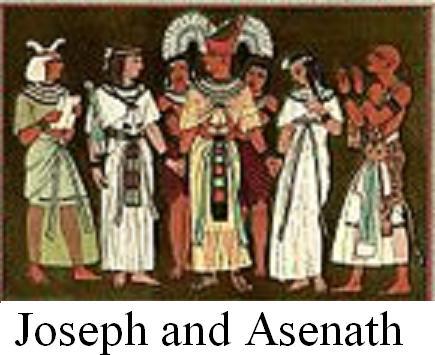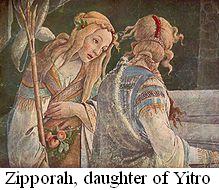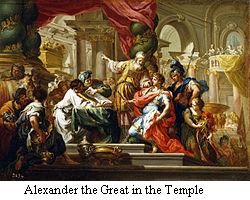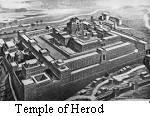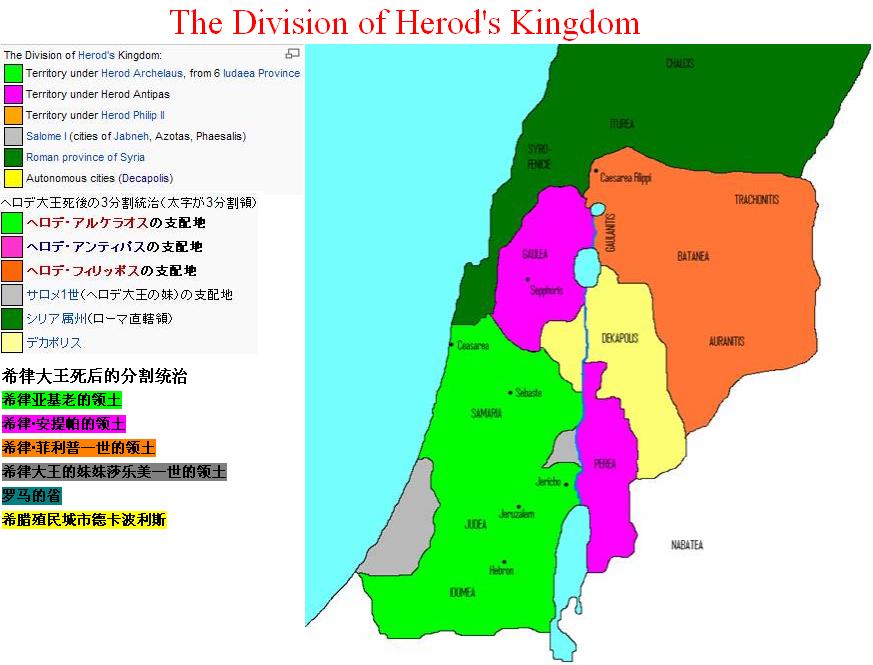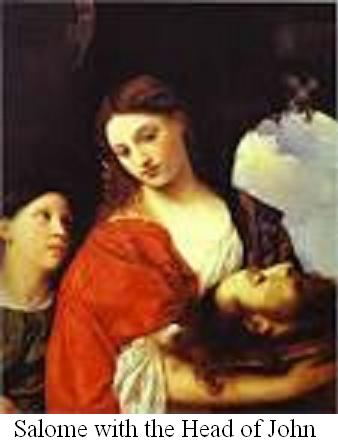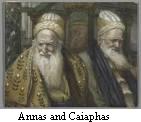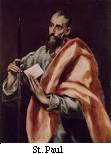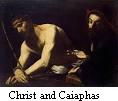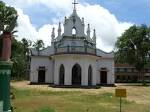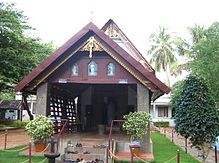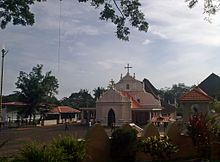Jesus' plan to be crucified (6)
Redeemer and Selective Monotheism
Jewish people are nomads who had experienced slavery in ancient Babylonia, Egypt and others. Because of this slavery experience, they fostered faith in Yahweh as the redeemer who rescues them from the bondage. They believe that different ethnic groups have different redeemers, but Jewish people's redeemer is only Yahweh. So this is a selective monotheism. In other words, they assume the existence of polytheism.
Leviticus 25
38 I am Yahweh your God, who brought you out of Egypt to give you the land of Canaan and to be your God.
39 If any of your fellow Israelites become poor and sell themselves to you, do not make them work as slaves.
40 They are to be treated as hired workers or temporary residents among you; they are to work for you until the Year of Jubilee.
41 Then they and their children are to be released, and they will go back to their own clans and to the property of their ancestors.
42 Because the Israelites are my servants, whom I brought out of Egypt, they must not be sold as slaves.
Open-minded founders of Judaism
There was a relatively lengthy period when the Jewish people adopted the religion of other nations such as Persia, Egypt, Babylon, etc. and were inclined to polytheism in the Jewish history. Although sometimes they stressed monotheism as a reaction, the founder of Judaism seemed to be not followers of the exclusive monotheism.
According to Mr. Shlomo Sand, Professor of history at Tel Aviv University, Abraham lived happily with the Egyptian concubine Hagar, Joseph took the Egyptian Aseneth to wife, Moses got married to Midianite Zipporah, David married a princess of Geshur, Solomon had no qualms about taking Edomite, Sidonite, Ammonite and Moabite women, among others and they never bothered to convert their chosen spouses. In other words, they respected their spouses' faith of belief other than Yahweh. Thus, the founders of Judaism were never exclusive monotheistic believers.
No Archaeological and Historical Evidence of the Mythistory
According to Mr. Sand, there are no archaeological and historical evidences for the Old Testament tradition such as Moses led the Jewish people and escaped Egypt and David and Solomon constructed a unified nation in Israel.
In fact, the Northern Kingdom "Israel", which was religiously opened and had the state apparatus relatively earlier, and the Southern region "Judah", which was tiny and religiously conservative, coexisted over a long period. As for the unified kingdom, it was established in Israel first time at the Hasmonean era, several generations before of Jesus.
Dated back to the Genesis, tiny Judah created the myth of the Old Testament, burning its rivalry spirit towards the Northern Kingdom of Israel just as the Japanese compiled "Kojiki" and "Nihon Shoki" (the two oldest extant historical records of Japan) to compete with Chinese long history. It was modeled after Chinese historiography.
According to Mr. Sand, the still-powerful pharaohs ruled the Promised Land Canaan in the thirteenth century BCE. The ancient Egyptians kept meticulous records of every event, and there is a great deal of documentation about the kingdom's political and military life. There are even documents about incursions of nomadic groups into the realm. Yet there is not a single mention of any "Children of Israel" who lived in Egypt, or rebelled against it, or emigrated from it at any time. Archaeological excavations in Jerusalem also failed to find any traces of the united national kingdom of David and Solomon.
Birth of Hasmonean Unified Nation
However, in 125 BCE, Yohanan Hyrcanus, the grandson of the rebel priest Mattathias, conquered Edom. In 104-103 BCE, his son Judas Aristobulus annexed the Galilee to Judea. Aristobulus's brother and his successor, Alexander Jannaeus destroyed Hellenistic cities, Samaria, Gaza, Gederah and many more. They also converted the people they conquered. Therefore, Jewish population increased several folds during their rules.
Internationalization of Judaism
Athough he was the great-grandson of the rebel priest Mattathias who had expelled the Hellenized Seleucid Syrian rule and had cleansed the temple, Monarch Jannaeus promoted a policy of modernization absorbing Hellenistic culture in a big way. As a result, the relation between the royal family and the Pharisees (a political party, a social movement, and a school of thought among Jews during the construction period of the Second Temple, especially under the Hasmonean dynasty) deteriorated rapidly.
The Judean Civil War began after he killed some 6,000 Pharisees and their supporters in the Temple courtyard during Tabernacles. Overall, the war lasted six years and left 50,000 Judeans dead.
After winning the civil war cooperated with the Sadducees, Essenes and others, Jannaeus also won the battle with the Ptolemaic dynasty and expanded its territory to the eastern part of the Jordan River. However, Jannaeus died during the siege of Ragabe Fortress at east of Succoth in Egypt at age 49.
In order to repair the relations with them, the king made his will to give power to the Pharisees and let them dispose his body freely in his last moments. Following that, the Pharisees made a big funeral for him and praised the king.
Mr. Sand said "Hellenism injected Judaism with the vital element of anti-tribal universalism and leading the rulers to abandon the exclusive commandments of Deuteronomy." As a result, different ethnic groups' mass conversion gained momentum and Jewish missionary work also became active in overseas buoyed by Jewish territorial expansion. The Gospel of Matthew offers additional testimony to outright Jewish missionizing: "Woe to you, teachers of the law and Pharisees, you hypocrites! You travel over land and sea to win a single convert, and when he becomes one, you make him twice as much a son of hell as you are" (Matt 23:15).
According to him, at its high point there, Judaism was professed by 7 to 8 percent of all the Roman empire's inhabitants.
Establishment of the Herod Dynasty
In the days of Alexander Jannaeus, Antipas was appointed governor of Edom. Julius Caesar, who had conquered Israel in 63 BCE, appointed his son Antipater as procurator of Judea in 47 BCE. Antipater appointed his sons Phasael and Herod to be governors of Jerusalem and Galilee respectively. Antipater was murdered in 43 BCE; however, his sons managed to hold the reins of power and were elevated to the rank of tetrarch in 41 BCE by Mark Anthony.
In 40 BCE, Antigonus II Mattathias, last Hasmonean king of Judea, invaded land and rule of Phasael and Herod with the help of the Parthians. Antigonus killed Phasael and officially proclaimed himself king and high priest. Herod managed to escape to Rome and was elected King of the Jews by the Roman Senate. With the help of Anthony, Herod marched into Jerusalem, toppled Antigonus and established the Herod dynasty in 37 BCE.
Herod Antipas and John the Baptist
Herod the Great ruled Israel until 4 BCE; at his death his kingdom was divided among his three sons. ①Herod Archelaus, son of Herod and Malthace the Samaritan, was given the main part of the kingdom: Judea, Edom and Samaria; ②Herod Philip I, son of Herod and his fifth wife Cleopatra of Jerusalem, was given jurisdiction over the northeast part of his father's kingdom; ③Herod Antipas, another son of Herod and Malthace, was made ruler of the Galilee and Perea.
Roman emperor Augustus made Herod Antipas marry the daughter of Arabian neighbor Nabataean King Aretas IV in order to maintain peace in the region. However, when Philip I died, Antipas divorced her and remarried the late brother's wife Herodeyas.
John the Baptist condemned Antipas for marrying Herodias in violation of Old Testament Law (Torah). Herod imprisoned John at the fortress Machaerus near the Dead Sea and later executed by beheading.
The Pharisees, who respected John the Baptist, had been prejudiced against the Herod royal family, who was offspring of Edomite and Pro-Rome, even as the Hasmonean Dynasty which had actively absorbed Hellenistic culture. Incidentally it is said that the Pharisaic opposition to the Hasmonean king Jannaeus was caused by his marriage to his brother's widow.
The Royal Feud
Although Antipas' marriage to his brother's widow seemed to help Judea's national uniformity, it is not clear why he divorced the daughter of Nabataean King who had been married to him through the good offices of the Roman Emperor. Judaism does not deny polygamy and his father Herod the Great had multiple wives. Of course bilateral relations with Nabataea was worsened and fell into a state of war. The relations with the Rome have cooled down too. Antipas might have the ambition to unify the Jewish nation, which had been divided into three fiefdoms, and invade into neighboring countries just as Hasmonean kings had done.
At that time, the Roman Empire was extremely unstable. The intrigues, which were involved with the district army corps, the senate, the court and the royal family, were swirling all around the Empire. Therefore, the children and grandchildren of Herod the Great separately tried to build relationships with various groups in Rome in order to survive.
According to Romano-Jewish historian Josephus (Yosef ), when Caligula became the emperor, he granted his friend Agrippa (the grandson of Herod the Great and Hasmonean princess, the brother of Herodias and the nephew of Antipas) the rule of Philip's former tetrarchy, with the title of king. Herodias was jealous of Agrippa's success and persuaded Antipas to ask Caligula for the title of king for himself. However, Agrippa simultaneously presented the emperor with a list of charges against the tetrarch: allegedly, he had conspired against Tiberius and was now plotting against Caligula. As evidence, Agrippa noted that Antipas had a stockpile of weaponry sufficient for 70,000 men. Hearing Antipas' admission to this last charge, Caligula decided to credit the allegations of conspiracy. In the summer of 39 AD, Antipas' money and territory were turned over to Agrippa, while he himself was exiled to Lugdunum (Lyon) in Gaul. After the death of Agrippa, his feudal estates became the Roman province. However his son Agrippa Ⅱ, who grew up in the court of the Emperor Claudius, became the last king of Herod Dynasty under the auspices of Claudius.
Royal family carefully watch Jesus' mission
Joanna, the wife of Antipas' steward Chuza, who secretly took the head of John the Baptist and buried it, later associated with the ministry of Jesus and saw Jesus on The Cross and His burial. It suggests Antipas' careful consideration to the emerging religious groups. In fact, when the Roman Prefect Pilate sent Jesus to Antipas, he was greatly pleased, because for a long time he had been wanting to see him. According to the Gospel of Luke, he plied him with many questions, but Jesus gave him no answer, Meanwhile it is said when Agrippa II arrived at Caesarea to pay his respect to the Prefect Festus, he met Paul, who had been arrested there, and was impressed by the latter's words.
Religious movement of Jesus
According to Mr. Sand, Galilee, where Jesus grew up, was populated and governed predominantly by the Itureans. The origin of Iturean, who is called Ismaelite (the descendants of the eldest son of Abraham and His Egyptian mistress Hagar), is probably Phoenician or possibly tribal Arab.
The disciples of Jesus, who were mostly native Galilean or from Decapolis (currently located in Jordan), Greek colonial cities, did not know many of the rules and precepts of Judaism. They were blamed for their behavior not only by the Pharisees but also by the disciples of John the Baptist. As a result, Jesus criticized the most of the fundamental rules of Judaism from the dining etiquette to fasting, prayer, alms and the Sabbath, sometimes violently and sometimes with humor and irony. Therefore, we can see that Jesus' religious activity had an aspect of religious reform movement by newcomers who mass-converted to Judaism under the Hasmonean Dynasty.
Jesus was Chosen. Chosen By who?
Jesus originally did missionary work in the region of Judea. However he left Judea and returned to Galilee when he heard that John had been put in prison. John sent his disciples from prison to Jesus to ask him, "Are you the one who was to come, or should we expect someone else?" (Matt 11:3) after Jesus had appointed the twelve apostles and rebuilt their church. John actually encouraged him "You're the Messiah."
The High Priest Kaiaphas and Annas, the ex-high priest and the father-in-law of the incumbent, also seemed to think that Israel needed a Messiah who might rebuild religious unity of a complex multiracial country Israel in order to survive under the rule of the Roman Empire. They singled out Jesus as the Messiah and sent missions several times to ask Jesus to testify himself as the Messiah. These missions included the Sadducees, affiliated group of the chief priests under the High Priest and the Pharisees who devoted to John the Baptist. (Matt 15, etc)
Meet with his real father
Afterward Jesus suddenly left Galilee and visited the region of Tyre and Sidon, gentile cities which had been built in the northwestern Mediterranean coast of Israel (both in Lebanon now) by Phoenician.
There is some mysterious writing in the Gospel of Mark chapter 7 verse 24, which says, "Then Jesus left Galilee and went north to the region of Tyre and Sidon. He didn't want anyone to know which house he was staying in, but he couldn't keep it a secret."
Mr. James D. Tabor, the author of "The Jesus Dynasty", has been questioned, "Why did Jesus suddenly leave Galilee, the territory of Herod, and go to the Phoenician coast cities, Tyre and Sidon. When he returned, again he chose the way passing through Sidon rather than the shortest way back."
According to Mr. Tabor, at that time, Roman army the first cohort of archers stationed in Sidon. And Tiberius Iulius Abdes Pantera, who is said to be Jesus' real father, belonged to this cohort. Pantera, a former slave, who obtained Roman citizenship by serving in the Roman army, might have a Semitic or even Jewish background based on his name, Abdes which means "servant of God"
Declaration of Messiah
Then Jesus turned to the south and came to Caesarea Philippi. Here, Jesus declared that he was the Christ and revealed the plan to go to Jerusalem and to be crucified. (Matt 16) Then he led Peter and the two sons of Zebedee up a high mountain by themselves and showed them the encounter with Moses and Elijah. (Matt 17)
However he did not immediately go to Jerusalem, but went toward north to Sidon again. Then he turned to the south and crossed the Sea of Galilee and went to Decapolis, colonial cities which the Greeks had built in the east bank of the Jordan River.
Faith of Atonement and Resurrection
When Jesus revealed his fate to be crucified at Caesarea Philippi, Peter was astounded and persuaded Jesus out of the plan. Jesus said to this primate of his disciples, "Get behind me, Satan!" From such astonishment of the disciples, we can see that the faith of atonement and resurrection was not included in Jesus' original teaching. Therefore Jesus' revelation seemed to be a bolt from the blue for his disciples. Incidentally especially the Pharisees had devoted “The Faith of Atonement and Resurrection”.
Paul seemed to be convinced that it was Jesus who might embody "the Christ as the redeemer" and systematized Judaism's "Faith of Atonement and Resurrection" as the foundation of Christianity. In other words, Jesus did not choose Paul, but Paul chose Jesus.
Although we have heard of the so-called event, "Paul's conversion", he never ceased to be a Pharisee and to be converted into a Christian but he adopted the Christian church into his "Faith of Atonement".
In this regard, Konan University Professor Emeritus Mr. Hitoshi Yamanaka, a member of Itami Church, United Church of Christ in Japan, says, "Paul was not as a disciple of Jesus to tell us his teaching but to tell us Christ as the redeemer who enable to practice his teaching. Paul's letters said this. These letters were written before the New Testament Gospels were written. This is the salvation of Christianity and the heart of the Christian faith."
When many disciples of John the Baptist joined the church of Jesus because John the Baptist declared that the man who would inherit his religious movement was Jesus and Jesus was the Messiah. Jesus seemed to decide to bear the role of a Messiah who might embody the Pharisees' resurrection belief, eschatology and the faith of Atonement.
However after the Last Supper, Jesus told his disciples the true reason for him to decide to be crucified.
True meaning of the Crucifixion
According to the Gospel of John Chapter 17, Jesus prayed "My prayer is not that you take them out of the world. They are not of the world. Sanctify them by the truth, your word is truth. (Jhon 17:15-17)" This is what Jesus told his disciples true meaning of his crucifixion as his last will and testament.
Jesus continued to pray, "For them I sanctify myself, that they too may be truly sanctified. (Jhon 17:19) I pray also for those who will believe in me through their message, that all of them may be one and they may be brought to complete unity. (Jhon 17:20-21) I have given them the glory that you gave me before the creation of the world, that they may be one as we are one. (Jhon 17:22-24)" Then they may have the full measure of my joy within them. (John 17:13)
Jesus also many times told his disciples "You are not of this world" so "You are clean" (Jhon 15:3,19; John 17:6,14,16) which means "You need not atonement at all."
This exactly reveal that "Since all is originally empty, where does the dust alight?" is the origin of the faith of Jesus.
Jesus further reminded his disciples, "For you have been with me from the beginning." (John 15:27) He meant that we have been with Jesus before the creation of the world.
Reference1:All is originally empty
Chinese Zen priest in Tang Dynasty, the fifth patriarch Hongren (602-675) one day told all his disciples to write a gatha (poem) on the southern passage wall of his temple for him to choose the one who would be the sixth patriarch.
The head monk, Venerable Shenxiu (605-706) soon wrote a gatha for Hongren, which stated: Body is the bodhi tree, heart is like a standing mirror. Strive to polish it constantly and let no dust alight.
Then a young novice called Huineng (638-713) wrote on the wall, next to Shenxiu's, which stated: Bodhi is no tree, nor standing mirror. Since nothing's there initially, where does the dust alight?
Hongren passed the robe and begging bowl as a symbol of the Dharma Seal of Sudden Enlightenment to Huineng and ordered him to flee to the south to avoid envy from the others.
Thereafter "Northern Chan Buddhism" which had succeeded the doctrines of Shenxiu's "gradualism" and "Southern Chan Buddhism" which had succeeded the doctrines of Huineng's "subitism" flourished in China.
Reference2:Everything is vanity
Incidentally, the faith of Yahweh as the redeemer has fostered the thought of "the chosen people, or slaves". In other words, the poorer or the smaller, the more appropriate is to the subject of redemption. Jesus also said, "It is easier for a camel to go through the eye of a needle than for a rich man to enter the kingdom of God." (Matt19:24) Therefore the New Testament too has this idea as the foundation of Jesus' teaching.
The extreme end of the poverty or smallness is the "emptiness"or "vanity". Ecclesiastes, a book of the Old Testament says; "The greatest vanity!" the congregator has said, "the greatest vanity! Everything is vanity!" (Ec1:2) It also says; And I hated life, because the work that has been done under the sun was calamitous from my standpoint, for everything was vanity and a striving after wind.(Ec2:17)
Mr. Takao Murakawa, who is serving a Christian newsletter, says, "There is the thought of vanity and impermanence of life in the book of Ecclesiastes."
This book is said to be the work of Solomon (about BC965-BC925). However it is very likely to be written from the 4th to 3rd century BC during the Second Temple period(BC538-AD70), hundreds of years after the age of Solomon.
Any way, it would say that the "empty theory" and the thought of "impermanence of life" were preached in India and the Middle East at about the same time. And also about the same time when Jesus was crucified, the Mahayana Buddhism movement started in India.
Sanctification
It is inevitable that a living man is covered in dust and guilt in this world. So is Jesus as the Son of Man. As Jesus needed to be crucified in order to sanctify himself in this world, so does a living man. He has to face the ultimate truth (The Word) and grapple with it in order to sanctify himself.
If we prepare to bear our crosses (the Divine Mandate/ the will of God), Jesus continue to live in us and all of us may be one and the world may be brought to complete unity. Jesus said in the Gospel of John that as long as we prepare to bear our crosses, we may have the full measure of Jesus' joy within us at once and need not wait until the end times.
This is the very doctrine of the Gnostic and is somehow similar to the teachings of the Sadducees who denied the Resurrection.
The Role of Kaiaphas
Kaiaphas, to whom the Roman prefect entrusted the job of the high priest, and his father-in-law Annas, the ex-high priest, opened the temple for Jesus' preaching. He also allowed him to drive out all merchants who were buying and selling in the temple area and connived for him to enter Jerusalem riding on a donkey, in other word as the king of Israel.
At that time, robust walls surrounded the city of Jerusalem and the temple too. Furthermore in this year's Passover Feast, both the Roman Prefect Pilate and the Tetrarch of Galilee Herod Antipas had come to Jerusalem from Caesarea and Tiberias respectively. Caesarea and Tiberias are about 87 km and 116 km away from Jerusalem in a straight line respectively. Therefore the city seemed to have been laid with much stricter vigilance.
Jesus chose this exact time to execute his plan. However without the permission of the high priest, it was impossible for him to enter Jerusalem riding a donkey and leading the crowd and to drive out the merchants from the temple swinging a whip. Jesus made a sermon in the temple after such riots. It suggests that the high priest had made special permission. According to the Gospel of John, one of Jesus' disciples, who was known to the high priest, not only went with the arrested Jesus into the high priest's courtyard, but also negotiated to bring Peter in.
Jesus' teaching is vivid in Mahayana Buddhism
Under the perfect collaboration among the high priest, Roman Governor and the tetrarch, Jesus' plan was executed perfectly. According to Professor Sand, after the execution of Jesus, most of Jews living in Jerusalem converted to Christianity first and to Islam later. Christianity spread rapidly among the Jews and non-Jews abroad.
However while Catholic Church centered Paul's teaching in their doctrine and Christianity was declared the official state religion of the Roman Empire, the Gnosticism was convicted Heresy. Thereafter twin-engine Christianity has been forced to fly on one engine in Europe although it still has the Gospel of John.
The original teachings of Jesus, after it had been brought to Orient by Thomas, not only influenced Manicheism and Buddhism, but also have remained vital in Mahayana Buddhism which flourished later in China and Japan.(Eko-an Hensho:2011-12-31)
What is "Baptism with The Holy Spirit"?
According to the dialectic of the Gospel of John,
【thesis】 "A man can possess eternal life through accepting testimony of the Son of man and being baptized by him." (John 5:24)
【anti-thesis】 But "The one who comes from the earth cannot accept the testimony by one from heaven."(John 3:32)
How then can a man possess eternal life?
【synthesis】 "If you want to be baptized with the Holy Spirit, you can just go back to the word which was with God in the beginning (John 1:1) and certify that God is truthful. (John 3:33)"
When he said, "You are Huichao," Zen Master Fayan thrusted vivid Self in Huichao in front of his eyes. (The Origin of Christianity P.171)
Purchase here
[Reference]
Saint Thomas Christian churches
The Saint Thomas Christians are an ancient body of Christians from Kerala, India, who trace their origins to the evangelistic activity of Thomas the Apostle in the 1st century. They are also known as "Nasranis" because they are followers of "Jesus of Nazareth". The term "Nasrani" is still used by St. Thomas Christians in Kerala.
They are also called Syrian Christians because of their use of Syriac in liturgy. Their original liturgical language was Aramaic which was later changed to Syriac. They are also known as Malabar / Malankara Mar Thoma Nasranis, because these Christians are from Kerala that was also known as Malabar or Malankara. Their language is Malayalam, the language of Kerala. (wikipedia)
<1>The Mar Thoma Syro-Malabar Catholic Church (Kodungaloor, Kerala)
Believed to be one of the seven churches in India built by St. Thomas.
<2>The St. Thomas Syro-Malabar Catholic Church (Palayur, Kerala)
Believed to be one of the seven churches said to be built by Thomas.
<3>The St. Thomas Syro-Malabar Catholic Church (Kottakayal, North Paravur, Kerala)
Believed to be one of the seven churches said to be built by Thomas.
<4>The St. Mary's Orthodox Church (Niranam, Kerala)
Believed to be one of the seven churches said to be built by Thomas.
<5>The St. Thomas Syro-Malabar Catholic Church (Kokkamangalam, Kerala)
Believed to be one of the seven churches said to be built by Thomas.
<6>St. Mary's Orthodox Church (Thiruvithamcode Arappally = Royal Church)
Believed to be founded by Thomas in 63. It is known as Arapalli, short form of Arachan Palli (King’s Church).
<7>St Mary's Syro-Malabar Catholic Church (Kudamaloor)
It was built by the king of Chempakassery in AD 1125
Your Comments / Unsubscribe
SEAnewsFacebook
SEAnewsGoogle
SEAnews eBookstore(Google)
